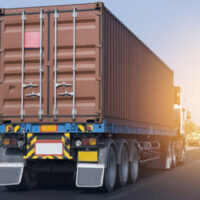What Is An Underride Accident?

Most people know that collisions between passenger vehicles and commercial trucks tend to have more severe consequences than crashes between two similarly-sized cars. This, however, is not the only danger associated with being in a truck accident. There are, for instance, certain kinds of accidents in which only large trucks can be involved. This includes underride accidents, which occur when a smaller vehicle, upon colliding with the side or rear of a larger truck, actually slides underneath it. These kinds of crashes are amongst the most dangerous and potentially fatal of any, as they often result in the top of the smaller vehicles being completely sheared away.
Types of Underride Accidents
There are two main types of truck underride accidents:
- Side underride crashes, which occur when a truck driver is crossing or turning onto a street, or is making a U-turn and an oncoming driver strikes the side of the truck; and
- Rear underride accidents, which occur when a passenger vehicle strikes the rear of a truck, often because it lacked the proper markings, was moving slowly, or was parked on the side of the road.
Underride accidents can have a number of contributing factors, but many occur when weather conditions (and visibility) is poor, or in multi-car pile-ups, when a driver is trying to avoid colliding with another vehicle.
Rear Guards are Legally Required
In the late 1990’s, the National Highway Traffic Safety Administration (NHTSA) started requiring all newly manufactured commercial vehicles to be equipped with rear guards, which are intended to prevent cars from sliding underneath the larger trucks. Unfortunately, many of these rear guards have aged and are no longer as strong as when they were installed. They could fail in the event of an accident, leaving smaller vehicles at risk of sliding underneath the larger truck. Side guards are still not mandated by the NHTSA, although the National Transportation Safety Board (NTSB) has repeatedly recommended that new trucks be equipped with side guards.
Liability for Underride Accidents
There are a number of different parties that can be held liable for underride accidents, including:
- The truck’s driver;
- The truck manufacturer;
- The trucking company that employed the driver;
- The owner of a truck’s cargo; or
- The company responsible for truck maintenance.
Which of these parties can be required to compensate an accident victim for medical bills, property damage, and lost wages will depend on the cause of the accident. If, for instance, an underride collision was the result of a driver’s illegal U-turn, then the driver and the company that failed to properly train him or her could bear responsibility for the crash. Similarly, a company that failed to install an underride guard or failed to repair dim, dirty, or inoperative tail lights, could be held liable for a victim’s damages.
Contact a Tulsa Truck Accident Lawyer
If you or a loved one were involved in an underride accident, or another kind of truck collision, contact Levinson Law, P.C. for a free, no-obligation consultation with one of our dedicated and compassionate Tulsa truck accident attorneys. To set up an appointment, fill out an online contact form or call us at 918-492-4433.
Sources:
fmcsa.dot.gov/safety/data-and-statistics/large-truck-and-bus-crash-facts-2019
one.nhtsa.gov/Research/Crashworthiness/Truck%20Underride
